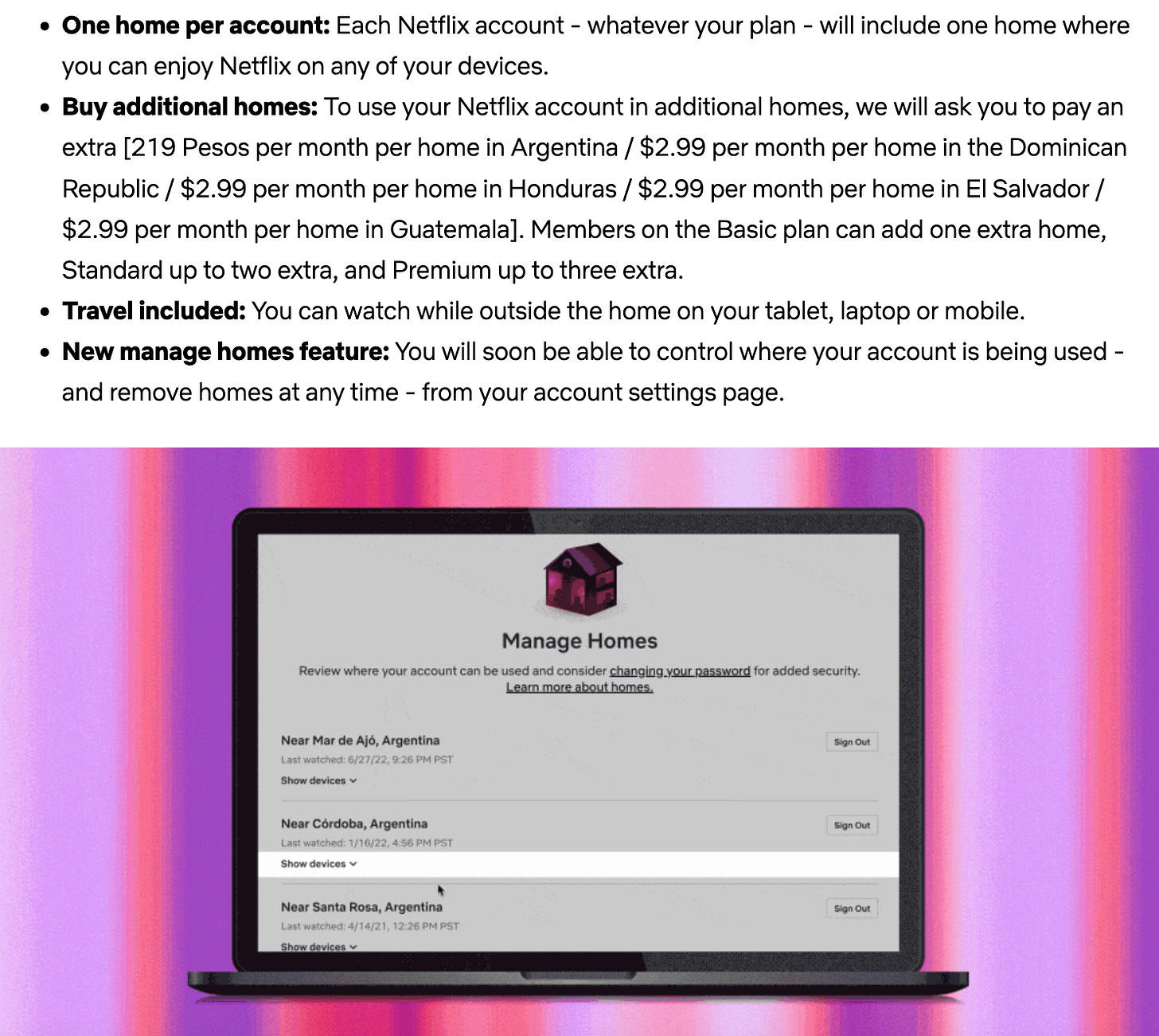THB #237: Netflix in Realityland™
Change is exciting. Exhilarating. Intoxicating.
And then there is this…
What is this? This is how Netflix is trying to enforce its anti-password-sharing effort in South and Central America. By taking away existing subscriber rights and, some would say, a core tenant of change that streaming represented.
If you can only watch a streamer in your home, how different is it, really, from the legacy TV experience?
Mind you, I don’t begrudge Netflix this choice or this effort. I get it.
Money is the enemy of Wonderland.
There have long been ideas about the future of free and the long tail and “information wants to be free” that make sense. Others, not so much.
Keep reading with a 7-day free trial
Subscribe to The Hot Button by David Poland to keep reading this post and get 7 days of free access to the full post archives.





